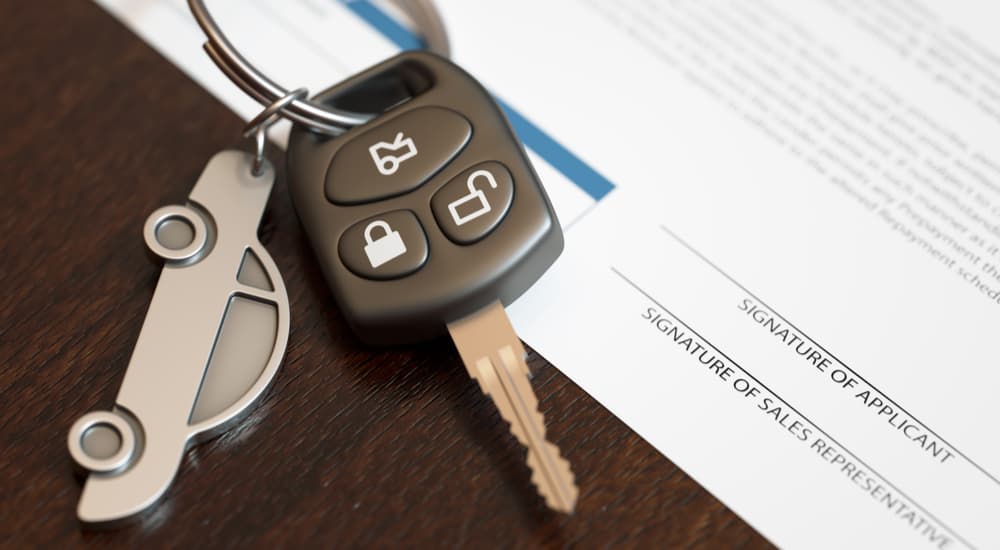Whether you’re a first-time car buyer or a veteran of the car-buying process, it’s essential to know your options when it comes to paying for your vehicle. You can pay cash, finance, or lease your vehicle, all of which have unique advantages and disadvantages. Since most people don’t have large sums of money sitting in their bank accounts or aren’t interested in a long-term rental, paying cash and leasing aren’t as popular as taking out a car loan.
But what does financing a vehicle require? Is it as complex as it sounds? How does an auto loan work? We’ve got these answers and more. So, take your seats and get ready for Auto Loans 101 because class is in session.
Auto Loan: The Basics
Paying cash for a vehicle is like using your debit card to buy groceries; the money is immediately withdrawn from your account when you swipe the card. In the case of your car, you take immediate ownership and, rather than making monthly payments on a loan, are only responsible for insuring and maintaining it. While this option is simple, most people don’t have vast amounts of money available, which makes financing a better option.
When you finance a vehicle, you borrow money from a lender to purchase the car, truck, or SUV. The lender charges interest on the borrowed money, which is part of what you repay each month. Since the lender paid for the vehicle, the lender holds the title until the loan is paid in full. Let’s break it down even further.

Principal
The principal is the total amount of money you need to borrow from the lender. Far from what’s on the car’s sticker price, the principal includes everything from add-ons and fees to provincial sales tax. It’s the final, out-the-door price with everything included except your down payment.
Lenders look at the principal and, in many cases, require a down payment before they approve the loan. The down payment reduces the principal or amount that you need to borrow. For some, this down payment means putting cash down on the vehicle or using their current vehicle as a trade. For example, you want to purchase a vehicle that will cost you $35,000 total. To lower the principal, you could make a down payment of $3,500 to bring the principal down to $31,500.
You can also use your current vehicle as a trade, even if you haven’t finished paying it off. For example, let’s say that your SUV is worth $10,000, and you still owe $4,000 on it. This gives you $6,000 to apply toward your next vehicle and reduces the $35,000 principal to $29,000.
Interest
Loaning anyone money is a huge risk because there’s no guarantee that you’ll get your money back. Lenders calculate this risk by looking at your credit score and credit history, as well as the amount you’re borrowing. Since auto loans are secured loans, the risk is mitigated because a lender knows it can get its investment back if you default or fail to repay the loan. This, however, is a worst-case scenario.
Since lenders take a significant risk when loaning money, they charge interest on the amount borrowed. This amount is based on the principal and is the annual percentage rate or APR. Interest rates usually range from 3% to 10%, depending on factors like the Bank of Canada’s key interest rate as well as your credit history. If you have a low credit score, the lender takes a more significant risk and will charge a higher interest rate on the loan.
Term
The term is the length of time you have to repay the loan. Most car loans range from 36 months to 72 months, which means you’ll have anywhere from three to six years to pay off your loan. The longer the term, the lower your monthly payments because it spreads out the total amount you owe over an extended period. However, it also means that you’re paying interest on the loan for a longer period and will spend more money overall.
A Real-Life Example
Let’s say that you have your eye on a $30,000 SUV that will cost you a total of $35,000 by the time you add provincial sales tax, add-ons, and other fees. You don’t have $35,000 sitting in your bank account, or if you do, you don’t love the idea of draining your savings. It’s a big investment, and financing makes more sense.
Using your current vehicle as a trade reduces the principal or amount you need to borrow to $29,000. Your credit score is “Good,” and you’re looking at a 72-month loan. Without factoring in interest, this puts your baseline monthly payment around $403, which means you can expect your monthly payment to range anywhere from $440 to $540 after interest is added.

Auto Loan: The Benefits
Even though it seems like a complex process with many factors at play, financing a vehicle offers a host of benefits. It’s a great way to build your credit and keep money in the bank. How so, and what other benefits can you expect?
No Cash Required
In many instances, financing a vehicle eliminates the need to have cash in hand at the time of purchase. Even if you have the money in your account, you don’t have to drain your savings to make the purchase. This allows you to keep your hard-earned money in the bank as an emergency fund, pay off your mortgage, or use it to meet other financial obligations like credit card debt. In turn, you get to drive away in a vehicle that meets your needs.
Building Equity
Financing a vehicle allows you to build equity or ownership. With each payment you make on the loan, you’re one step closer to owning your car, truck, or SUV outright. Once your loan is satisfied, you take full ownership of the vehicle and 100 percent equity. When you lease a vehicle, you’re making payments to rent or borrow the vehicle for a predetermined length of time. At the end of the lease, you have no stake in ownership or equity in the vehicle.
Build Your Credit History
Your credit score is based on your payment history, the amount of credit used in relation to the available credit, the length of your credit history, inquiries into your credit file, and public records. Your score determines if a lender will approve you for a loan and the interest rate charged on the principal. Since lenders report your payments to the Canadian credit bureaus, this impacts your credit score. As a result, auto loans are an excellent way to rebuild your credit if you are committed to making your monthly payments on time and in full.
Securing A Loan: Putting It All Together
Now that you know how car loans work, it’s time to start shopping for your next vehicle. As you begin your search, sit down and look at your finances to determine a budget ceiling or the most you’re willing to spend on your purchase. You’ll also want to get an idea of your credit score or credit history to help you better prepare for the loan application process. Taking these steps allows you to narrow your search to vehicles that meet your budget needs and sets you up for greater financial success.



